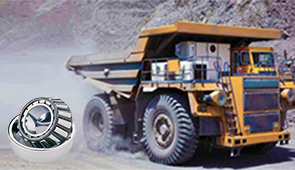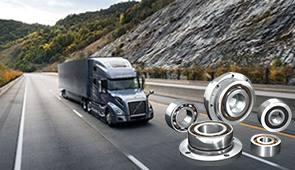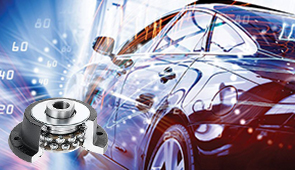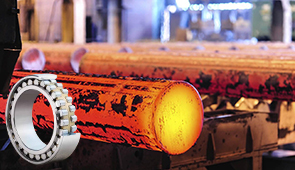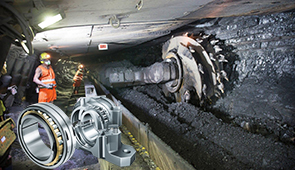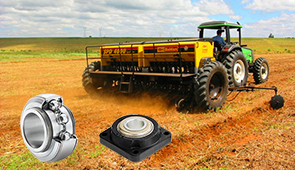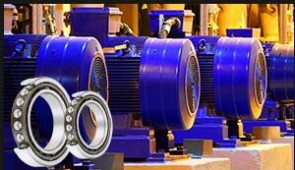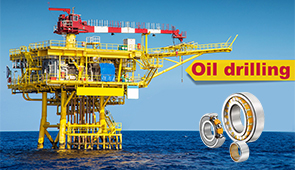What’s a Tie Rod: Understanding the Inner and Outer Tie Rods in Your Vehicle
When it comes to the functionality and safety of your vehicle, few components are as critical yet as overlooked as the tie rods. These seemingly simple parts play an essential role in ensuring precise steering control and maintaining proper alignment of your wheels. Without them, turning your vehicle would be not only difficult but also dangerously unpredictable. But what exactly do tie rods do, and why are they so important? This article takes a closer look at the inner and outer tie rods, how they work together within your vehicle’s steering system, and why understanding them can help you identify potential issues before they compromise your safety on the road.
What is a Tie Rod?
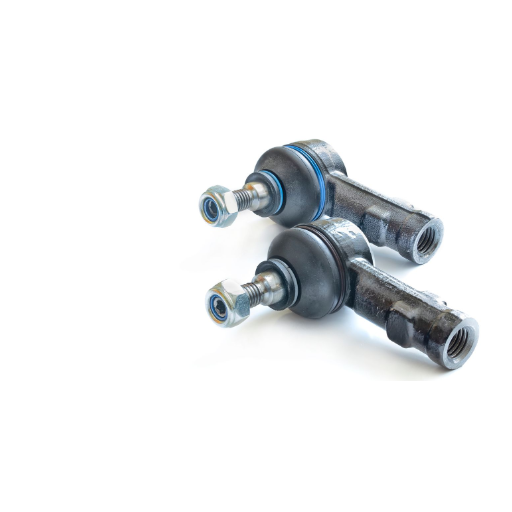
Definition and Purpose
It is a crucial part of steering that links the steering gear with the steering knuckle. Its primary function is to exert force from the steering rack to let the wheels pivot or turn according to the driver’s steering. Tie rods need to ensure that the wheels maintain proper alignment during operation; otherwise, handling will be unstable and steering unresponsive.
The tie rod set usually comprises the inner and outer tie rods. The inner tie rod attaches to the steering rack, and the outer tie rod to the steering knuckle. Together, they convert the rotation from the steering wheel to the lateral movement needed to steer the vehicle. This allows the control of the vehicle’s direction while the balance and stability are maintained.
Working tie rods are essential in ensuring the safest driving conditions possible. Worn or damaged tie rods result in loose steering, uneven tire wear, and, in more extreme cases, even a total shock-to-steering situation. Tire rods need regular maintenance and inspection for them to perform optimally; anything less may become a safety hazard on the highways. This explains their relevance-they serve the vehicle’s performance and simultaneously aim at safety.
Components of a Tie Rod System
The tie rod system comprises three major components that work together to ensure proper steering. These include the inner tie rods, the outer tie rods, and the tie rod ends. With each part fulfilling a particular function, they transform the motion of the steering gear to the wheels and assist in precise vehicle control.
- Inner Tie Rod: The inner tie rod attaches directly to the steering gear or rack assembly. Acting as the primary link, it transmits the rotational motion applied by turning the steering wheel. Generally, enclosed by a protective boot, the inner tie rod acts with the steering mechanism to achieve accurate changes in direction.
- Outer Tie Rod and Tie Rod Ends: An outer tie rod links the inner tie rod to the steering knuckle. The far points of the tie rod ends act as primary pivot points to facilitate free articulation. These ends have joints, mostly of the ball type, to allow free movement of the wheels since they must also be kept aligned during operation. Hence, it is very essential to keep these joints well lubricated and maintained so as to avoid wear beyond normal, thereby endangering the steering mechanism.
Understanding how these components function will give drivers and technicians an idea of how the tie rod system fits into the larger picture of vehicle safety and performance.
Types: Inner and Outer Tie Rods
There are two types of tie rods-outer and inner. Thus, the role of each tie rod in the system is different. Inner tie rods are attached directly to the steering rack and transfer movement encountered by steering input to outer tie rods. These are provided with a protective boot to avoid contamination from debris and moisture, so as to enable smooth and correct operation.
Outer tie rods are, by all means, near the wheels. It converts the linear motion delivered by inner tie rods into angular motion that finally turns the vehicle’s wheels. Outer tie rods are threaded at their ends to allow for fine adjustments during wheel alignment, which, when properly done, improves handling and prevents tire wear.
The inner and outer tie rods jointly forge a solid link between the steering mechanism and the wheels. The combined workings of the tie rods ensure that vehicle movement is in harmony with driver input. Regularly inspecting and replacing worn or damaged tie rods is essential in retaining the highest level of vehicle security, steering accuracy, and performance.
How Tie Rods Function in Vehicle Steering
Role in Steering Control
Tie rods remain crucial components the steering system; for control of precision and responsiveness, they perform the following details defining steering control:
- Steering Input Transmission: Currently, tie rods transmit the steering effort from the steering gear to the wheels. Such controlled movement guarantees that inputs from the driver are appropriately converted into wheel orientation for easier navigation.
- Alignment: Tie rods of good condition maintain wheel alignment, so the wheels stay parallel to each other with proper driving dynamics. Poor alignment with destroyed or worn tie rods will cause tires to wear excessively and require more fuel to operate.
- Load Balancing: The tie rods evenly distribute the steering forces across the suspension network. If the forces are not evenly spread, the suspension components will bear undue stresses, thereby shortening their life and affecting road manners under different driving situations.
- Impact Absorption: Tie rods provide a slight flexing movement between the steering system and wheels, so they absorb minor road vibrations and impact. This prevents the transmission of excessive shock to the driver and thus increases driver comfort.
- Safety Assurance: The working tie rods allow the vehicle to respond to inputs from the steering system, mainly during critical maneuvers. Tie rods become dangerous as the failure in them compromises steering control while cornering or in an emergency situation.
These and other capabilities help the tie rods impart the needed precision, safety, and efficiency in any vehicle’s steering system. Therefore, the tie rods should always be observed to check their whereabouts for potential performance and safety issues.
Impact on Wheel Geometry
Tie rods ensure proper wheel alignment for adequate vehicle response and tire life. They do so by positioning the toe, which is the wheel geometry, deciding the angle of the wheels with the centerline of the vehicle. Any change in the length of the tie rod will alter the toe setting of the vehicle, leading to uneven tire wear, higher rolling resistance, and fuel consumption.
When worn or damaged, instability can aberrantly transfer to the angles of camber and caster, the consequence certainly being further poor wheel alignment. For instance, a damaged tie rod will induce one wheel to stray sideways from its course, hence bringing about steering pull, reduced cornering precision, and a greater susceptibility to road impacts. To maintain the alignment within the manufacturer’s specified tolerance (generally in degrees or fractions thereof), one must monitorthe tie rod condition through precise checking and adjustment(s).
The more recent alignment systems involve computerized tracking to finely check out the comings and goings in toe, camber, and caster angles. Such systems allow an early detection of a degrading tie rod, hence lessening its impact on wheel geometry and further improving safety. Tie rod integrity, therefore, is held as cardinal to vehicle stability, efficient tire usage, and steering dynamics.
Signs of Tie Rod Wear or Failure
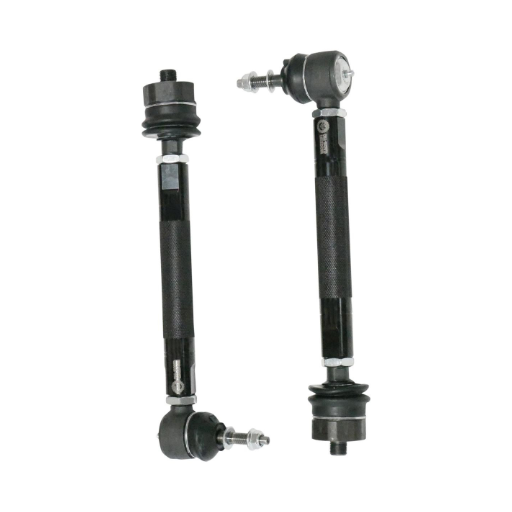
Unusual Noises During Turns
One of the major signs of tie rod wear or failure may be the unmistakable clunk or knock during turns. A loose-acting tie rod may be because either the steering rack or the steering knuckle has developed play. Over time, dirt and moisture are allowed to enter through breaks in the protective rubber boot that covers the ball joint of the tie rod. In the joint, rust and wear begin to occur, and it has less ability to grasp its position under load. As a result, the loose components will make noises when the torque generated by the steering system comes into play while turning.
Such noises mostly develop and are most audible in sharp or low-speed turning, with forces exerting at peak levels on the tie rods under these conditions. The wear or failure in the tie rod and its progression causes alignment changes, thus increasing vibrations and noise as the steering system attempts to maintain geometrical balance. Ignoring these signs will allow the mechanical stresses to dissipate into adjacent components like the control arms, ball joints, or even the steering rack itself, which will, in turn, worsen the problem and increase the cost of repair.
A thorough examination of the tie rod assembly is suggested to definitively trace the origin of strange noises. Usually, this involves raising the vehicle and testing for movements or free play at the joint while the front wheels are rocked from side to side. Computerized diagnostic instruments, including those integrated into modern alignment systems, can measure steering and suspension angles that correspond to irregularities indicative of tie rod wear. Early detection and service provide an increase in safety involved in its use because if one tie rod becomes severely compromised, sudden steering failure may occur during high-speed emergency maneuvering situations.
Indicators of Uneven Tire Wear
An uneven tire wear is a telltale sign of improper vehicle alignment or suspension problems that compromise safety, performance, and efficiency. Some key patterns of irregular tire wear include:
- Feathering: This type of wear occurs when tread ribs or blocks wear more heavily on one side than the other, and is alternatively caused by incorrect toe settings, are the angle at which the tires point inward or outward.
- Camber Wear: A peculiar type of wear wherein either the inner or the outer edges of the tires’ tread run faster as compared with the middle part. This usually suggests that the camber alignment is amiss, where the wheels are tilted inward excessively (negative camber) or outward (positive camber).
- Cupping: Cupping is another term for scalloped edges; while this pattern shows highs and lows along the tread, it is usually caused by a combination of worn shocks or struts and other suspension components that fail to absorb properly the impacts of a rough road.
- Center Wear: Excessive wear along the tire tread center indicates overinflation, which leads to a smaller contact patch with the road and reduces performance and traction in general.
- Edge Wear: When the outer edges of the tire wear more than the center, this can be attributed to underinflation of the tire since the less inflated tires reduce the load-handling capacity and increase the chances of a blowout.
Advanced diagnostic tools such as laser alignment systems and tread depth gauges can measure these wear patterns very accurately, thus aiding in identifying the root cause. Making sure the maintenance schedule includes tire rotations, alignment checks, and monitoring of tire inflation pretty much eradicates the risk of uneven wear. Ignoring these indicators can eventually translate into braking inefficiency, less handling stability, and higher fuel consumption.
When the Wheel Feels Loose
Some serious potential issues can arise from a loose-feeling wheel within the steering or suspension system of a vehicle. One of the many issues that can cause such a sensation is an excessive amount of play dialed into the wheel hub assembly, culminating from a worn and perhaps damaged wheel bearing. This can reduce handling performance and may increase other safety risks. Tightening lug nuts may also be a problem if that is poorly implemented, thereby posing a risk to the wheel’s firm attachment onto the hub. Thus, one must always ensure that the lug nuts have been double-checked and tightened to the torque specs given by the manufacturer.
Another failure could be steering linkage items like tie rods or ball joints that might go bad over time. This leads to a loose feeling in the tire. Suspension items improperly aligned contribute significantly to such tyre wear and decreased stability during driving. Advanced diagnostics should be conducted depending on wheel alignment angles, suspension geometry, steering linkage arrangement, and possible other factors to ascertain the exact cause.
Vehicles with a loose wheel sensation should immediately be paid heed from a certified mechanic for utmost safety and performance. Otherwise, postponement of repair could cause further mechanical breakdown or loss of control on the road, hence necessitating a proactive inspection and maintenance.
Maintaining and Replacing Tie Rods
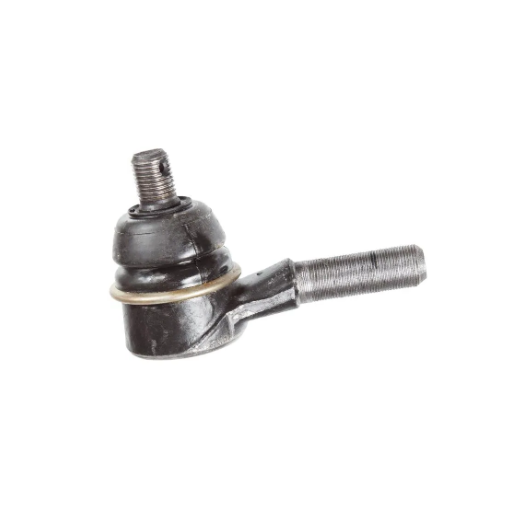
Routine Inspection Guidelines
A proper tie rod inspection routine is essential for maintaining vehicle safety and steering precision. Begin the process of inspection by ensuring that the vehicle is on a flat and firm surface, supported either by jack stands or on a hydraulic lift, which allows unhindered access to the suspension components. First, visually inspect the tie rod for signs of damage such as cracks, corrosion, and worn-out rubber boots. Grease leaks from the ball joint area should be taken into serious consideration, as they imply broken seals and eventual failure.
Next, grab the tie rod and try moving it laterally in your physical check. Any movement or play will indicate that either the inner or outer tie rod ends are worn and need further attention. Then, go on to check other components attached to it, such as the steering rack and control arms, since excessive vibrations or misalignments in those can also point to tie rod problems.
To have an accurate diagnosis, either use a pry bar to apply pressure to the tie rod and observe any excessive movement in the ball joint or measure the tire alignment, if possible. Unbalanced or uneven tire wear is generally indicative of increasing tie rod deterioration. The inspection should be performed at least once during every routine oil change or every 5,000-7,500 miles, depending on how your vehicle is driven, and customer suggestions are included. These measures, when carried out properly, prevent the occurrence of problems and ensure that your steering system lasts for a long time.
When You Need to Replace a Tie Rod
I replace a tie rod once a driver observes clear signs of wear or degradation of the steering system. There could also be an arising problem wherein steering play is noticeably increased; clunking, knocking, or other out-of-the-ordinary noises become audible when turning; or tires might show uneven wear on one side. These are symptoms caused by the tie rod either loosening or suffering damage, and hence losing the ability to maintain proper alignment or control.
Sometimes, when the symptoms do not appear suddenly, I have to perform routine inspections on the tie rod to ascertain its condition. If during a regular maintenance inspection, I detect some movement at the tie rod end that is not within specifications or find a damaged grease boot that is letting lubricant leak out, it’s an indication that replacement is due. Leaving such conditions uninsured would aid the steering system in degrading further, thus creating potentially unsafe driving conditions. I ensure the procedure for inspection follows the recommendations made by the manufacturer.
Normally, a tie rod is replaced in advance in order to maintain the precision of the vehicle’s handling and its safety. If considered later, this repair leads to crooked wheels, which in turn accelerates tire wear, further diminishing fuel efficiency, and straining other suspension members. Should these manifestations come on subtly or become obvious, though, I use tie rod repairs immediately; for there is enough good reason to avoid extra troubles and good cause to keep the vehicle operating in all conditions.
Steps for Proper Replacement
- Initial Inspection and Diagnosis: Carry out a visual and manual examination of the tie rod to define how much wear or damage exists. Check for any sign of play beyond specification, torn boots, rust, or lack of tightness. Using a pry bar to attempt to create movement beyond the specified tolerance might help. It is important to diagnose the problem correctly to be able to decide on partial or full replacement.
- Preparation and Safety Measures: Park the vehicle on level ground and engage the parking brake, confirming stability by setting wheel chocks. Now, jack up the vehicle following its approved jacking points and place jack stands beneath for support. Always disconnect the negative battery terminal in advance if working near sensors or electrical components.
- Wheel Removal: Remove the wheel at the affected tie rod’s side. This will allow unblocked access to the suspension components and ease removal and installation.
- Loosen the Tie Rod End Jam Nut: Use a suitable socket or wrench to loosen the jam nut that secures the tie rod end to the steering rack or center link. Applying penetrating oil should loosen a seized or rusty one, but it should be ensured that the correct torque is applied so as not to damage the threads.
- Removal of the Forms: The outer tie rod end is separated from the steering knuckle with a tie rod puller or pickle fork so as not to damage anything else. Count and record the number of rotations as the tie rod end is unthreaded for alignment reference. Remove the inner rod if needed; an inner tie rod tool may be necessary, depending on specifics.
- Tie Rod Installation: The new outer tie rod end must be screwed onto the inner one, using the recorded rotation count as a guide. Affix the inner tie rod to the steering rack with torque set to the manufacturer’s specification. Using a calibrated torque wrench, all connections shall be torqued to specifications to minimize the risk of premature failure under load.
- Align Components and Secure: Carefully align the tie rod to the steering knuckle and install the castle nut or locking mechanism, as specified. If applicable, install the cotter (locking) pin before the castle nut can loosen during operation. And finally, verify that the jam nut and all connections are sufficiently tightened.
- Testing and Realignment: Install the wheel, then lower the vehicle softly onto the ground. Carry out an initial test for steering noise or abnormal resistance. The vehicle must then be taken for a professional alignment to adjust any steering geometry misalignments caused by the replacement.
- Inspection after Repair: The final inspection consists of checking everything to ensure proper installation. It must be confirmed that the tie rod lies securely without the slightest movement. Safety pins, nuts, and any other fasteners must be in place definitively. Failure to inspect before operation could result in serious accidents.
With strict compliance with the aforesaid steps, mechanical precision, correct alignment, and ultimately vehicle safety are assured. For torque specifications and procedure confirmations related to a make and model, always consult the vehicle’s service manual.
Importance of Tie Rods for Vehicle Safety
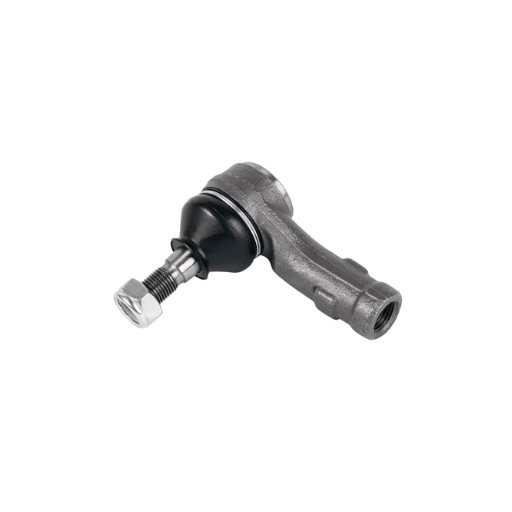
Contribution to Overall Vehicle Handling
These are vital elements in steering and directly affect the driving characteristics and overall stability of the vehicle. They are the rods linking the steering rack to the wheels, but loosely translating the movement of the steerer into the lateral movement of the wheels. On this mechanical relationship, the wheels must coherently translate the changes in direction either gently or sharply to maintain consistent control during slight road irregularities. A well-maintained tie rod will ensure less play and irregularities in the steering, due to which the vehicle will exhibit responsive and predictable handling. Driver confidence on the road will also be enhanced because of this.
The tie rod’s quality and condition have a bearing on tyre alignment and wear patterns. Misaligned tie rods will induce uneven tire wear, stress suspension components unnecessarily, and possibly reduce fuel efficiency, all leading to a compromised handling performance. Usually, modern cars will feature tie rods manufactured and subjected to strict specifications, which use exotic materials and processes to attain high tolerances and durability. Tie rods must be inspected regularly for excessive looseness or visible damage so that they work optimally and avoid mechanical failures.
From the standpoint of mechanical applications, tie rods are primarily involved in the dynamic stability of the suspension geometry, which entails toe angle adjustments. Correct toe setting means proper lateral forces are generated by the tires even when the vehicle is subjected to hard cornering and quick maneuvers. This facilitates accurate cornering with the vehicle not tending to understeer or oversteer. In contrast to tie rods used on less sophisticated cars, those of today, aided by progressions in materials science and automotive engineering, have been made to resist extreme stresses, thus providing an improved safety margin for performance applications. Maintenance as prescribed by the manufacturer is the best remedy that ensures the efficient operation of tie rods over time.
Emergency Maneuvers and Steering Stability
Emergencies put extreme pressure on the steering system, testing its ability to remain stable under very sudden and violent changes of direction. The stability during steering is directly a function of suspension geometry, the stiffness of the steering linkages, and the responsiveness of active electronic control systems such as ESC and Active Steering Assist.
From a modern perspective, sensor fusion is employed to provide continuous monitoring of wheel angles, lateral acceleration, and yaw rates to allow real-time correction through active steering or braking interventions to reduce skidding or the loss of control. Analysis of crash avoidance data highlights a need for perfect integration between the mechanical parts, such as tie rods, and electronic aids. Such a system improves cornering stability under hard braking or lane change maneuvers by over 30% compared to older models without such systems.
Proper emergency maneuver functioning demands perfect steering rack adjustment, periodic checking of tie rod ends, and conformance of tire alignment. Anything less entails delaying the steering response, which under adverse road conditions or at relatively high speeds can lead to considerable vehicle instability.
Proactive Maintenance for Safe Driving
Proactive vehicle care ensures both the longevity of a vehicle and its safe operation under diverse conditions. Regular upkeep of brakes, tires, scenario diminution systems, and steering diminishes the risk of sudden failures. Underlying tire pressure should always be maintained properly to ensure it meets the road contact criteria: uneven wear, fuel efficiency, and overall balance. Industry statistics state that 15 % of tire accidents are due to low tire pressure, which presents the need for keeping it checked daily.
Once again, monitoring of braking systems is necessary, since a worn-out brake pad or improperly functioning hydraulic component shortens stopping distances significantly. To prevent accidents, these components are subjected to change at the intervals specified by the manufacturer. Using diagnostic tools that interface with the onboard vehicle systems can provide pre-warnings if there will be an electronic stability control or an anti-lock braking system malfunction, both of which have been part of vehicle safety since fairly recent times.
Advanced telematics and predictive maintenance algorithms thus work to protect the driver by studying real-time data from vehicle sensors and catching any potential issues before they start leading to performance degradation. By combining these stellar strategies with time-tested servicing schedules as recommended by the manufacturer, drivers can find themselves well ahead of the wear-and-tear problems, thereby providing safer roadways for everybody.
Frequently Asked Questions (FAQ)
Q: What’s a tie rod?
A: A tie rod is a critical component of a vehicle’s steering system that connects the steering gear to the steering knuckles at the front wheels. It plays a vital role in steering control and helps the vehicle turn properly.
Q: What are the two parts of a tie rod?
A: The tie rod consists of two parts: the inner tie rod and the outer tie rod. The inner tie rod connects to the steering rack, while the outer tie rod connects to the steering knuckle, allowing for the transfer of motion when the steering wheel is turned.
Q: How does a tie rod connect the steering system?
A: The tie rod connects the steering gear to the steering knuckles, which allows for the steering wheel’s movements to be transferred to the wheels. This connection is essential for effective steering and maintaining proper alignment.
Q: What symptoms indicate a worn tie rod?
A: Symptoms of worn tie rods may include a loose steering wheel, uneven tire wear, excessive noise when turning, and difficulty in driving straight. If you notice these symptoms, it may be time to inspect the tie rods.
Q: How often should tie rods be inspected or replaced?
A: It is recommended to inspect tie rods regularly, especially if you notice any symptoms of wear. If they are found to be worn or damaged, they may need to be replaced to prevent further issues with the steering system.
Q: Can a bad tie rod damage the steering system?
A: Yes, a bad tie rod can lead to misalignment, which may cause additional wear on other steering and suspension components. If left unaddressed, it can result in reduced performance and potentially damage the entire steering system.
Q: What is the role of a tie rod end?
A: The tie rod end is the connection point between the tie rod and the steering knuckle. It allows for movement and flexibility while ensuring that the steering system can function correctly during turning and navigating different driving conditions.
Q: How does a tie rod affect vehicle alignment?
A: The tie rod plays a critical role in maintaining proper alignment of the wheels. If the tie rod is worn or damaged, it can lead to misalignment, causing uneven tire wear and affecting the vehicle’s handling and steering response.
Q: What should I do if my steering wheel feels loose?
A: If your steering wheel feels loose, it may indicate a problem with the tie rods or other steering components. It is advisable to have a qualified mechanic inspect the tie rods and the entire steering system to identify any issues and recommend necessary repairs.
Q: How do tie rods help improve steering control?
A: Tie rods help improve steering control by ensuring that the steering wheel’s movements are accurately transmitted to the wheels. This connection allows for precise turning and maneuvering, enhancing overall driving safety and performance.
UCTH213-40J-300 with Setscrew(inch)
CNSORDERNO: Normal-duty(2)
TOGN: UCTH213-40J-300
SDI: B-R1/8
SD: 2 1/2
UCTH212-39J-300 with Setscrew(inch)
CNSORDERNO: Normal-duty(2)
TOGN: UCTH212-39J-300
SDI: B-R1/8
SD: 2 7/16
UCTH212-38J-300 with Setscrew(inch)
CNSORDERNO: Normal-duty(2)
TOGN: UCTH212-38J-300
SDI: B-R1/8
SD: 2 3/8
UCTH212-36J-300 with Setscrew(inch)
CNSORDERNO: Normal-duty(2)
TOGN: UCTH212-36J-300
SDI: B-R1/8
SD: 2 1/4
UCTH211-35J-300 with Setscrew(inch)
CNSORDERNO: Normal-duty(2)
TOGN: UCTH211-35J-300
SDI: B-R1/8
SD: 2 3/16
UCTH211-34J-300 with Setscrew(inch)
CNSORDERNO: Normal-duty(2)
TOGN: UCTH211-34J-300
SDI: B-R1/8
SD: 2 1/8









